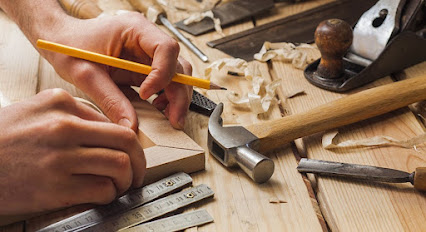1. Crafting Materials and Techniques
Crafting materials and techniques encompass a wide array of options that cater to various interests and skill levels. Here's an overview of common crafting materials and techniques:
1. Paper Crafting:
Paper is a versatile crafting material used for a multitude of projects. Techniques include origami (folding paper into intricate shapes), papercutting (creating designs by cutting paper), cardmaking (designing handmade greeting cards), scrapbooking (creating decorative albums), and paper quilling (rolling and shaping strips of paper).
2. Fabric Crafts:
Fabric offers endless possibilities for sewing, quilting, and other textile projects. Sewing techniques include hand sewing and machine sewing, used to create clothing, accessories, home decor items (such as curtains and pillows), and quilts. Other fabric crafts include embroidery, cross-stitching, knitting, crocheting, and weaving.
3. Woodworking:
Woodworking involves crafting items from wood using hand tools or power tools. Techniques include sawing, sanding, drilling, carving, and staining. Woodworking projects range from small-scale items like jewelry boxes and picture frames to larger pieces of furniture and home decor.
4. Jewelry Making:
Jewelry making involves creating wearable pieces using various materials such as beads, wire, metal findings, and polymer clay. Techniques include stringing beads, wire wrapping, metal stamping, soldering, and molding clay. Jewelry makers can create necklaces, bracelets, earrings, rings, and other accessories.
5. Clay and Pottery:
Clay is a versatile medium for sculpting and pottery. Techniques include hand building (forming clay by hand), wheel throwing (creating pottery on a potter's wheel), sculpting (modeling clay into three-dimensional shapes), and glazing (applying color and finish to pottery). Clay and pottery projects include vases, bowls, sculptures, and decorative objects.
6. Painting and Drawing:
Painting and drawing are classic artistic techniques used to create two-dimensional artworks on various surfaces. Painting mediums include acrylics, watercolors, oils, and gouache, while drawing materials include pencils, pens, markers, and charcoal. Artists can create paintings, illustrations, sketches, and mixed media artworks.
7. Mixed Media:
Mixed media art involves combining different materials and techniques to create layered and textured artworks. This can include collage (assembling images and materials onto a surface), assemblage (constructing three-dimensional pieces from found objects), and incorporating elements like fabric, paper, paint, and found materials.
8. Resin Crafts:
Resin is a versatile material used for casting and embedding objects in clear or colored resin. Resin crafts include making jewelry, coasters, keychains, and art pieces by pouring resin into molds, embedding objects like flowers or glitter, and adding pigments or dyes for color.
9. Metalworking:
Metalworking involves shaping and manipulating metal to create functional or decorative items. Techniques include forging, welding, soldering, casting, and metal stamping. Metalworkers can create jewelry, sculptures, home decor, and custom metalwork.
10. Digital Crafting:
Digital crafting involves using digital tools and software to create designs for printing or digital distribution. This includes graphic design, digital illustration, digital scrapbooking, and creating printables for various projects.
These are just a few examples of the vast range of crafting materials and techniques available to crafters of all skill levels. Whether working with traditional materials like paper and fabric or exploring newer mediums like resin and digital design, crafting offers endless opportunities for creativity and self-expression.










Comments
Post a Comment